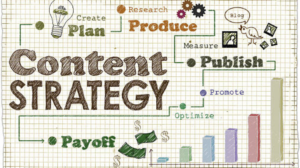OUR SERVICES
We craft comprehensive strategies that go beyond mere visibility, focusing on engagement and conversion. We boost your brand’s online presence by crafting SEO-driven content and social media campaigns that speak directly to your audience’s needs. Our data-driven approach ensures that every campaign is not just a creative endeavor but a measurable success. From optimizing your website for search engines to curating impactful social media campaigns, we are committed to enhancing your digital presence and delivering tangible results.









Marketing Analysis

Market Analysis helps businesses gain insights into their environment and identify opportunities and threats. Marketing analysis is a unique discipline that involves a detailed examination of market dynamics to inform business decisions. It goes beyond mere data collection to interpret and predict market trends, consumer behavior, and competitive landscapes. This analytical process leverages statistical tools, data mining, and predictive modeling to provide actionable insights. By understanding these patterns, businesses can optimize their marketing strategies, improve customer engagement, and enhance their competitive advantage. Marketing analysis is essential in a rapidly evolving marketplace, helping businesses to anticipate changes, identify opportunities, and mitigate risks.
The Comprehensive Guide to Market Analysis: Services, Functions, and Importance
One of the most effective ways to do this is through thorough market analysis. This extensive guide delves into the intricacies of market analysis, its services, functions, and the profound importance it holds for businesses aiming to thrive in competitive environments. In the fast-paced world of business, knowledge is power. Market analysis serves as a cornerstone for companies aiming to understand their competitive landscape, identify opportunities, and make informed decisions. This blog explores the essential functions of market analysis and how they contribute to driving business success.
Understanding Market Analysis
Market analysis involves the systematic evaluation of market dynamics, trends, consumer behavior, and competitive landscapes. It provides businesses with valuable insights into current market conditions and future prospects. By gathering and interpreting data, companies can formulate effective strategies that align with market realities and capitalize on emerging opportunities. It involves evaluating market dynamics, including the demand and supply conditions, the competitive landscape, consumer behavior, and market trends. The primary objective of market analysis is to gain insights that can inform strategic business decisions, optimize marketing efforts, and ultimately enhance profitability and market share.
Key Services in Market Analysis
1.Consumer Behavior Analysis:
This service focuses on understanding how consumers interact with products and services. It examines their purchasing habits, preferences, motivations, and decision-making processes. Consumer behavior analysis delves into understanding how consumers make purchasing decisions, what influences their buying patterns, and how they interact with products and services. This service utilizes various methods such as surveys, focus groups, and data analytics to gather detailed insights into consumer preferences, motivations, and behaviors.
2.Market Segmentation:
Market segmentation involves dividing a broad market into smaller, more defined categories of consumers who have similar needs or characteristics. This allows businesses to target specific segments more effectively with customized marketing strategies, leading to better engagement and higher conversion rates. Market segmentation involves dividing a broad market into smaller, more defined groups of consumers who share similar characteristics or needs.
3.Competitive Analysis:
Competitive analysis involves assessing the strengths, weaknesses, opportunities, and threats posed by current and potential competitors. Understanding the competitive landscape helps businesses to identify gaps in the market, capitalize on competitors’ weaknesses, and position themselves advantageously. Competitive analysis examines the strengths and weaknesses of current and potential competitors. This service includes evaluating competitors’ products, market share, pricing strategies, marketing tactics, and overall market positioning.
4.Trend Analysis:
Trend analysis focuses on identifying and interpreting emerging trends within the market. This includes technological advancements, shifts in consumer preferences, and changes in economic conditions. Trend analysis is a pivotal element of market analysis, serving as a powerful tool for businesses to navigate the complexities of modern markets. Trend analysis focuses on identifying and interpreting emerging trends within the market. This includes analyzing historical data, monitoring industry developments, and predicting future trends that may impact the market.
Functions of Market Analysis
1.Strategic Planning:
Market analysis provides the foundational data needed for strategic planning. By understanding market conditions, businesses can develop long-term strategies that align with market realities and opportunities. This information enables companies to set realistic goals, allocate resources effectively, and develop strategies that leverage their competitive advantages.
2.Identifying Market Opportunities:
Through market analysis, businesses can uncover unmet needs, underserved segments, and emerging trends that present new opportunities for growth and expansion. One of the primary functions of market analysis is to identify new market opportunities. By analyzing market trends, consumer preferences, and technological advancements, businesses can pinpoint underserved market segments or emerging niches.
3.Risk Management:
Market analysis helps businesses anticipate and mitigate risks by providing insights into potential threats and market fluctuations. This enables companies to make informed decisions and develop contingency plans. By assessing potential threats such as competitive pressures, economic downturns, or regulatory changes, businesses can anticipate challenges and develop contingency plans. This proactive risk assessment minimizes uncertainties and enhances business resilience.
4.Performance Measurement:
Regular market analysis allows businesses to measure the effectiveness of their marketing efforts, sales strategies, and overall performance. Performance measurement assesses the impact and efficiency of marketing strategies deployed within the market. Measuring performance is essential for evaluating the effectiveness of strategies and initiatives. This continuous evaluation allows companies to identify areas for improvement and optimize their operations.
Importance of Market Analysis
1.Informed Decision Making:
One of the primary reasons market analysis is crucial is its role in facilitating informed decision-making. By conducting thorough market research and analysis, businesses gain a deep understanding of their market environment. Armed with this knowledge, businesses can make strategic decisions regarding product development, pricing strategies, marketing campaigns, and expansion plans. Informed decisions based on solid market analysis reduce uncertainty and increase the likelihood of success.
2.Enhanced Customer Understanding:
Central to any successful business is its ability to meet customer needs and preferences effectively. Market analysis provides valuable insights into consumer behavior, purchasing patterns, and preferences. Through surveys, focus groups, and data analytics, businesses can gain a deep understanding of what drives customer decision-making. This knowledge enables businesses to tailor their products, services, and marketing strategies to better resonate with their target audience. By meeting customer expectations more effectively, businesses can enhance customer satisfaction, loyalty, and retention.
3.Market Adaptability:
Market analysis helps businesses uncover new opportunities for growth and expansion. By analyzing market trends and consumer behavior, businesses can identify underserved market segments, unmet customer needs, and emerging trends. This allows businesses to capitalize on these opportunities by developing products and services that meet market demand. Whether it’s entering new geographic markets, launching innovative products, or diversifying offerings, market analysis provides the insights needed to seize opportunities before competitors do.
4.Optimized Marketing Strategies:
Effective marketing is built on a foundation of market analysis. By understanding market segments, consumer behavior, and competitive positioning, businesses can develop targeted and effective marketing strategies. Market analysis helps businesses identify the most lucrative market segments, determine optimal pricing strategies, allocate marketing budgets efficiently, and craft compelling messaging that resonates with their target audience. This data-driven approach not only enhances the effectiveness of marketing campaigns but also improves return on investment (ROI) by focusing resources on initiatives with the highest potential for success.
Domain Services

The Ultimate Guide to Domain Services
One of the foundational elements of this presence is a domain name. A domain name not only serves as your online address but also plays a critical role in branding, credibility, and search engine optimization (SEO). This comprehensive guide delves into the world of domain services, exploring their importance, types, how to choose the right domain, and best practices for managing your domain portfolio.
Understanding Domain Names
your domain name is your address, your brand, and often the first impression visitors have of your online presence. Choosing the right domain name and understanding the services surrounding it is crucial for anyone looking to establish a successful website. It is composed of two main parts: the name itself (second-level domain) and the extension (top-level domain, or TLD).
Types of Domain Names
1. Top-Level Domains (TLDs):
At the heart of this naming system are Top-Level Domains (TLDs). TLD services play a crucial role in the registration and management of these domains, impacting everything from SEO to brand identity. These are the extensions at the end of domain names, such as .com, .org, .net, .edu, and country-specific extensions like .uk, .ca, and .au.
2.Generic Top-Level Domains (gTLDs):
Generic Top-Level Domains (gTLDs) are one of the categories of top-level domains (TLDs) maintained by the Internet Assigned Numbers Authority (IANA). These include traditional extensions like .com, .org, and .net, as well as newer options like .app, .blog, .shop, and .xyz. gTLDs are open for registration to anyone without any specific restrictions.
3.Country Code Top-Level Domains (ccTLDs):
Country Code Top-Level Domains (ccTLDs) are domain extensions that are assigned to specific countries or territories. Each ccTLD consists of two letters, which are typically derived from the country’s name. These are specific to countries or regions, such as .uk (United Kingdom), .de (Germany), .jp (Japan), and .in (India). They often have residency requirements or other restrictions.
4.Sponsored Top-Level Domains (sTLDs):
Sponsored Top-Level Domains (sTLDs) are a specialized category of TLDs that are sponsored by a specific community, organization, or private entity. These domains are intended to serve a particular segment of the internet community, providing them with a dedicated namespace. These are specialized TLDs sponsored by specific communities or organizations, like .gov for government entities, .edu for educational institutions, and .mil for military organizations.
5.Second-Level Domains:
A second-level domain is the part of a domain name that comes directly before the top-level domain (TLD). In the domain name “example.com,” “example” is the second-level domain, and “.com” is the TLD. Together, they form the complete domain name. These are directly below TLDs in the domain hierarchy and can be customized to suit the brand or purpose of the website.
Choosing the Right Domain Name
Choosing a domain name is often the first step towards establishing a strong online presence. Your domain serves as your digital identity, influencing everything from brand perception to SEO rankings. Selecting the perfect domain name involves careful consideration of several factors.
1.Keep It Simple and Memorable:
A short, simple, and memorable domain name is easier for users to type and remember. Avoid complex words, numbers, and hyphens that can cause confusion. Whether you’re launching a new business or revamping your online identity, investing time in selecting the right domain name and service provider can pay dividends in building a recognizable and successful online brand presence.
2. Use Relevant Keywords:
Incorporate relevant keywords that reflect your business, industry, or niche. This can enhance your SEO efforts and help users understand the nature of your website. Whether you’re launching a new business or looking to revamp your existing website, selecting the right domain service provider and domain name is crucial for success in the digital landscape.
3.Consider Your Target Audience:
Your audience’s needs and preferences will shape the type of domain you choose, the services you require, and how you manage your online presence. Think about your target audience and choose a domain name that resonates with them. A domain name that appeals to your audience can enhance engagement and brand loyalty.
4.Check Availability and Trademarks:
Ensure that your chosen domain name is available for registration and doesn’t infringe on any trademarks. Use domain search tools and trademark databases to verify availability. By checking the availability of domain names and ensuring they do not infringe on existing trademarks, you can secure a strong, legally sound foundation for your brand.
Domain Registration Process
Registering a domain name involves several steps, and it’s essential to follow them carefully to secure your desired domain. Here’s a step-by-step guide:
1.Select a Domain Registrar:
A domain registrar is a company that manages the reservation of internet domain names. These registrars are accredited by the Internet Corporation for Assigned Names and Numbers (ICANN) to sell domain names. Choose a reputable domain registrar accredited by ICANN. Popular registrars include GoDaddy, Namecheap, Bluehost, and Google Domains.
2. Evaluating Domain Value:
If your desired domain is already taken, you might have the option to purchase it from the current owner. Use domain appraisal tools like EstiBot or GoDaddy’s Domain Appraisal to get an estimate of the domain’s value. Consider factors such as domain length, keywords, and market trends before making an offer.
3.Choose a Registration Period:
Domain names can be registered for a minimum of one year, with the option to renew annually or for multiple years. Longer registration periods can offer cost savings and ensure long-term ownership. By carefully considering your business goals, budget, and administrative capabilities, you can select a registration period that best suits your needs. Whether you opt for a short, medium, or long-term registration, the key is to ensure your domain remains secure and consistently accessible to your audience.
4.Provide Contact Information:
You’ll need to provide accurate contact information, including your name, address, email, and phone number. This information is required for WHOIS records and domain management. By understanding the types of contact information required and following best practices, you can ensure that your domain registration is secure and reliable.
5.Select Add-Ons and Privacy Protection:
Many registrars offer additional services such as domain privacy protection, which hides your contact information from public WHOIS databases. Consider these options to enhance security and privacy. Domain add-ons can enhance the functionality and professionalism of your website, while privacy protection shields your personal information from public exposure. By carefully assessing your needs, prioritizing security, and choosing the right services, you can ensure that your domain is not only functional but also secure and private.
6.Complete the Registration:
Review your order, ensure all details are correct, and proceed to payment. Once the payment is processed, you’ll receive a confirmation email, and your domain will be officially registered. you can secure a domain name that reflects your brand, protects your identity, and positions you for success on the internet. Once your domain is registered, you’re ready to build your website, create content, and engage with your audience, paving the way for a successful online journey.
SEO Consultancy

SEO (Search Engine Optimization) consultancy plays a crucial role in helping businesses optimize their online presence to improve visibility in search engine results. This comprehensive guide will delve into the definition, importance, functions, and services provided by SEO consultancy firms, covering various aspects such as strategy development, on-page and off-page optimization, technical SEO, content optimization, and the evolving landscape of SEO practices.
Definition of SEO Consultancy
SEO consultancy involves providing expert advice and services to businesses aiming to enhance their visibility and rankings in search engine results pages (SERPs). It encompasses strategic planning, implementation, and ongoing optimization to align with search engine algorithms and user behavior trends.
Importance of SEO Consultancy
1. Enhanced Online Visibility:
SEO consultancy helps businesses improve their rankings in search results, making them more visible to potential customers actively searching for related products or services. Higher visibility in search engine results pages (SERPs) leads to more clicks and visits to your website. While SEO requires ongoing effort, the results can be long-lasting and continue to benefit your business over time. Users often trust websites that appear at the top of search results, associating higher rankings with authority and credibility.
2.Increased Organic Traffic:
By optimizing website content and structure, SEO consultancy drives organic traffic from search engines, reducing dependency on paid advertising for website traffic. increased organic traffic means more qualified leads and higher chances of conversions because these users are already interested in your client’s offerings. This builds trust and credibility among potential customers, which is invaluable in competitive markets where trust is a crucial factor in decision-making.
3.Cost-Effective Marketing:
compared to paid advertising, SEO provides a sustainable and cost-effective marketing strategy, offering long-term benefits with higher ROI potential. In today’s digital landscape, where visibility and online presence can make or break a business, Search Engine Optimization (SEO) consultancy plays a pivotal role. SEO helps businesses improve their organic search engine rankings, driving targeted traffic and ultimately, conversions. However, even the best SEO services require effective marketing to reach potential clients and demonstrate their value.
4.Builds Credibility and Trust:
Higher search engine rankings often correlate with perceived credibility and trustworthiness, influencing consumer behavior positively. Credibility begins with expertise. An SEO consultancy that demonstrates deep knowledge, understanding, and proficiency in the field is naturally perceived as a trusted advisor. Clients seek SEO services not just for technical proficiency but for strategic guidance that aligns with their business goals.
5.Competitive Advantage:
Businesses implementing effective SEO strategies gain a competitive edge by outranking competitors in search results, capturing more market share. They can offer deeper insights, customized strategies, and proven tactics tailored to their clients’ needs. A strong competitive advantage lies in understanding and prioritizing client needs. Successful SEO consultancies go beyond generic solutions; they conduct thorough audits, analyze competitors, and develop strategies aligned with the client’s business goals.
Functions of SEO Consultancy
1.Strategic Planning
Search Engine Optimization (SEO) has become not just a buzzword but a crucial component of any successful online strategy. For businesses aiming to enhance their online visibility and drive organic traffic, engaging with an SEO consultancy is often a strategic imperative. At the heart of effective SEO consultancy lies strategic planning—a systematic approach that underpins every successful SEO campaign.
2.On-Page Optimization:
On-page optimization encompasses a diverse array of strategies aimed at enhancing a website’s visibility and performance in search engine results. This multifaceted approach includes meticulous keyword research to strategically integrate relevant keywords into titles, headings, meta descriptions, and throughout engaging and informative content. Ensuring a clean and descriptive URL structure, optimizing for mobile responsiveness, and implementing a robust internal linking strategy further bolster site navigation and user experience.
3.Technical SEO:
Technical SEO encompasses various crucial elements that ensure a website’s optimal performance and visibility in search engine results. These include site speed optimization, which enhances user experience and reduces bounce rates by ensuring swift loading times. Structured data markup, such as schema markup, enables search engines to understand and display content more effectively, leading to rich snippets in SERPs.
4.Link Building:
Link building is a crucial component of SEO strategy, encompassing various types aimed at enhancing a website’s authority and visibility. Natural link building occurs organically when websites link to valuable content. Manual outreach involves proactively reaching out to websites for links. Editorial links are earned through quality content and relationships.
5.Performance Monitoring and Reporting:
Performance monitoring and reporting are indispensable aspects of any successful SEO consultancy strategy. It involves tracking various key performance indicators (KPIs) to assess the effectiveness of SEO efforts and make informed decisions for optimization. Types of performance monitoring include organic traffic metrics, such as website visits and bounce rates, which gauge user engagement and site relevance.
6.Algorithm Updates and Adaptation:
Algorithm updates are pivotal moments in the world of SEO, reshaping the digital landscape and challenging businesses to adapt swiftly. These updates can broadly fall into several categories like Core Updates, Quality Updates, Speed and Mobile Updates, and Security Updates. Each update necessitates proactive adaptation, compelling SEO strategies to evolve with updated best practices and guidelines to maintain and improve search engine rankings effectively.
Hosting Services

The Ultimate Guide to Choosing the Right Hosting Service
In the digital age, having a reliable and efficient hosting service is crucial for any website’s success. Whether you’re running a personal blog, an e-commerce store, or a corporate website, the choice of hosting service can significantly impact your site’s performance, security, and overall user experience. This comprehensive guide will delve into the intricacies of web hosting, helping you understand the different types of hosting services available and how to choose the best one for your needs.
Understanding Web Hosting
A hosting service provides the infrastructure and technologies needed for a website to be accessible via the internet. When you create a website, it consists of various files (HTML, images, videos) that need to be stored and served to users when they visit your site. Hosting companies own and operate servers, which are specialized computers that store your website files and deliver them to visitors’ browsers.
1. Server:
A server is a powerful computer or hardware system that stores, manages, and delivers data and services to other computers, known as clients, over a network. In the context of web hosting, servers play a pivotal role in storing website files, processing requests from users, and delivering web pages to visitors’ browsers.
2.Bandwidth:
Bandwidth refers to the amount of data that can be transferred to and from your website within a specific period, usually measured in bytes per second. It determines how much traffic your website can handle at any given time. Think of it as a highway: the wider the highway (higher bandwidth), the more cars (data) can travel on it simultaneously without congestion.
3.Storage:
Storage is the backbone of any website’s functionality. It refers to the amount of disk space allocated to store your website’s files, databases, images, videos, and other content. By understanding the different types of storage available and assessing your specific needs, you can make an informed decision when choosing a hosting provider.
4.Uptime:
When choosing a hosting service, maximizing uptime should be a top priority. Uptime refers to the period during which a website is operational and accessible to users without interruption. It is typically measured as a percentage of time over a given period, such as 99.9% uptime, which means the site is expected to be down for no more than 0.1% of the time.
Types of Web Hosting Services
In the digital landscape, choosing the right web hosting service is crucial for the performance, security, and scalability of your website. With various options available, understanding the types of web hosting services can help you make an informed decision that aligns with your specific needs and goals.
1. Shared Hosting:
Shared hosting involves multiple websites sharing resources on a single server. Think of it as renting a small apartment in a large building, where each tenant shares common facilities like the parking lot, elevators, and utilities. Similarly, websites on a shared hosting server share resources such as CPU, RAM, and disk space.
2. Virtual Private Server (VPS) Hosting:
Virtual Private Server (VPS) hosting involves dividing a physical server into multiple virtual servers, each running its own operating system (OS) and hosting environment. Each VPS operates independently, mimicking the functionality of a dedicated server within a shared hosting environment. Virtual Private Server (VPS) hosting stands out as a powerful and flexible option that bridges the gap between shared hosting and dedicated servers.
3. Dedicated Hosting:
Dedicated hosting involves renting an entire physical server exclusively for your website or application. Unlike shared hosting, where multiple websites share the same server resources, dedicated hosting gives you full control over the server environment. This means you have access to all the server’s resources, including CPU, RAM, storage, and bandwidth, without sharing them with anyone else.
4. Cloud Hosting:
Cloud hosting is a type of web hosting service that utilizes a network of virtual servers, which are hosted in the cloud. Unlike traditional hosting services that rely on a single physical server, cloud hosting spreads resources across multiple interconnected servers. This distributed architecture allows resources to be dynamically allocated and scaled based on demand, ensuring optimal performance and uptime for websites and applications.
5. Managed Hosting:
Managed hosting is a service where the hosting provider takes care of all technical aspects of running a website. This includes server setup, maintenance, security, updates, and support. Unlike traditional hosting services where users are responsible for these tasks, managed hosting allows website owners to focus on their core business while leaving the technical details to experts.
Popular Web Hosting Providers
Let’s explore some of the top web hosting providers known for their reliability, performance, and customer support:
1. Bluehost:
Bluehost is a well-known hosting provider recommended by WordPress. It offers a range of hosting services, including shared, VPS, and dedicated hosting, with a focus on performance and reliability. Bluehost stands out as a prominent name known for its reliability, affordability, and robust features. Whether you’re launching a personal blog, setting up an online store, or establishing a corporate website, Bluehost offers a range of hosting solutions designed to meet diverse needs.
Features:
– domain for first year
– 24/7 customer support
– One-click WordPress installation
– 99.9% uptime guarantee
2. SiteGround:
SiteGround has established itself as a prominent player in the hosting industry, renowned for its robust infrastructure, excellent customer support, and innovative features. This blog aims to provide a comprehensive review of SiteGround hosting services, helping you determine if it’s the right choice for your web hosting needs.
Features:
– Daily backups
– Free SSL certificates
– 24/7 customer support
– High-performance servers with SSD storage
3. HostGator:
ostGator has established itself as a prominent player, offering a wide range of hosting solutions tailored to various needs. Whether you’re launching a personal blog, setting up an e-commerce site, or managing a corporate portal, HostGator promises robust performance and reliable service. By understanding their hosting plans and features, you can make an informed decision to support your online endeavors effectively.
Features:
– 45-day money-back guarantee
– 24/7 customer support
– Free website builder
– Unmetered bandwidth and storage
4. A2 Hosting:
In the bustling world of web hosting, finding the right provider can make all the difference in the performance and success of your website. A2 Hosting has emerged as a popular choice among users seeking reliable, high-performance hosting solutions. This review explores what sets A2 Hosting apart, its key features, and why it might be the ideal hosting service for your needs.
Features:
– Turbo servers for faster loading times
– Free site migration
– 24/7 customer support
– Anytime money-back guarantee
5. InMotion Hosting:
In the vast landscape of web hosting services, InMotion Hosting stands out as a reliable and versatile provider catering to a wide range of website needs. Founded in 2001 and based in the United States, InMotion Hosting has built a reputation for its commitment to performance, customer support, and innovative hosting solutions. This review will delve into what makes InMotion Hosting a preferred choice for businesses, developers, and individuals seeking robust hosting services.
Features:
– Free domain and SSL certificate
– 90-day money-back guarantee
– 24/7 customer support
– High-performance SSD storage
Keyword Research

Keyword research is a fundamental component of search engine optimization (SEO) and digital marketing. It involves identifying and analyzing the specific words and phrases (keywords) that potential customers use when searching for products, services, or information on search engines like Google. In other words ever-evolving landscape of digital marketing, keyword research remains a cornerstone of effective SEO strategies. Understanding what your audience is searching for and how to optimize your content accordingly is essential for driving organic traffic and achieving high search engine rankings.
The Ultimate Guide to Keyword Research for SEO Success
1.Understanding Keyword Research
It is the process of identifying the words and phrases that potential customers use when searching for products or services similar to what your business offers. For digital marketing agencies, mastering keyword research is crucial to driving targeted traffic, improving search engine rankings, and ultimately achieving business goals. This blog will delve into the importance of keyword research, the steps involved, tools to use, and best practices to ensure your digital marketing efforts are effective. By understanding these search terms, businesses can create content that aligns with the needs and interests of their target audience, thereby improving their chances of appearing in relevant search engine results.
2. The Importance of Keyword Research:
SEO Optimization:
It helps in optimizing your website and content to rank higher in search engine results pages (SERPs). At the heart of effective SEO lies keyword research – a fundamental practice that can make or break your online presence.
Content Strategy:
It guides content creation by revealing topics that your audience is interested in search. Keyword research isn’t just about identifying popular search terms; it’s a strategic approach that guides content creation, optimization, and overall digital marketing efforts.
Audience Insight:
It provides insights into the language and terminology used by your potential customers. understanding your audience is paramount to crafting effective strategies that resonate with potential customers. One of the most powerful tools in this pursuit is keyword research.
Competitive Advantage:
It allows you to understand and outperform your competitors in search rankings. By investing time and resources into comprehensive keyword research, businesses can effectively position themselves for success in SEO.
3. Types of Keywords:
Short-Tail Keywords:
Short-tail keywords, also known as head keywords, are broad search terms consisting of one or two words. Examples include “shoes,” “digital marketing,” and “SEO.” These keywords tend to have high search volumes but are extremely competitive. While they can drive a lot of traffic, the conversion rate is often lower due to their general nature.
Long-Tail Keywords:
The term “long-tail” comes from the statistical distribution graph, where a small number of broad keywords represent the “head” and a large number of more specific keywords form the “tail.” Although each long-tail keyword may attract less search traffic individually, collectively they account for a significant portion of overall search queries.
LSI Keywords (Latent Semantic Indexing):
LSI (Latent Semantic Indexing) keywords have emerged as a crucial element in enhancing content relevance and search engine rankings. They help search engines understand the context of the content by adding depth and relevance. examples: Online Marketing, SEO, Content Marketing, Social Media Marketing.
4. Tools for Keyword Research
Numerous tools are available to assist with keyword research. here are some Essential Tools for Keyword Research:
Google Keyword Planner:
As part of Google Ads, this tool offers invaluable insights into keyword search volumes, trends, and competition levels. It’s ideal for identifying primary keywords and estimating their potential impact on SEO efforts. It’s particularly useful for PPC campaigns but can also be used for organic SEO. Google Keyword Planner is a free tool designed primarily for Google Ads users.
Ahrefs:
It is also known for its extensive backlink analysis, Ahrefs also excels in keyword research. It offers insights into keyword difficulty, search volumes, and SERP (Search Engine Results Page) features, enabling marketers to refine their SEO strategies effectively. It provides detailed keyword metrics, including search volume, keyword difficulty, and click-through rates (CTR).
SEMrush:
SEMrush is another all-in-one SEO tool that offers extensive keyword research features. Semrush provides comprehensive SEO data, including keyword analytics, competitor research, and backlink analysis. Its robust feature set helps marketers uncover valuable keyword opportunities and monitor their SEO performance.
Moz Keyword Explorer:
Moz Keyword Explorer is a user-friendly tool that offers keyword suggestions, search volume data, and a unique metric called Keyword Difficulty Score, which helps gauge the competition level for a keyword. It also provides insights into organic CTR (Click-Through Rate) and priority keywords, aiding in strategic content planning.
Uber suggest:
Uber suggest offers a user-friendly interface for keyword research. It provides keyword suggestions, search volume data, and competitive analysis, making it suitable for both beginners and seasoned SEO professionals. It is a free tool that provides keyword suggestions, search volume data, and competition analysis.
5. Steps to Conduct Effective Keyword Research
Identify Your Niche
Before diving into keyword research, clearly define your niche. Your niche is the specific area of the market that you are targeting. Knowing who you are trying to reach will help you generate relevant keyword ideas. For example, instead of targeting “fitness,” narrow it down to “yoga for beginners” or “postnatal fitness.”
Brainstorm Seed Keywords
This method involves generating a list of initial seed keywords and then expanding upon them to discover a wealth of related terms that can drive organic traffic to your website. For example, if your niche is “organic gardening,” seed keywords might include “organic vegetables,” “composting,” and “pest control.”
Use Keyword Research Tools
It involves identifying the words and phrases that potential customers use to search for products, services, or information related to your business. Enter your seed keywords into tools like Google Keyword Planner, Ahrefs, or SEMrush to generate a list of related keywords along with their search volume and competition data.
Analyze Competitor Keywords
Analyzing competitor keywords is a critical aspect of keyword research. Examine the keywords your competitors are ranking for. Tools like Ahrefs and SEMrush allow you to enter a competitor’s URL and see the keywords they are targeting. This can provide valuable insights and help you identify keyword opportunities.
Refine Your Keyword List
Now that you have a broad list, search volume data, an understanding of user intent, long-tail keywords, and competitor insights, it’s time to refine your list. Prioritize keywords that align with your business goals, have a reasonable search volume, and low to moderate competition. Remove any keywords that are too broad, irrelevant, or overly competitive.
Content Marketing

Unlocking Success with Content Marketing: Strategies for the Digital Age
Content marketing is a powerful tool for building brand authority, engaging with your audience, and driving business growth. In today’s digital landscape, where attention spans are fleeting and consumer choices abundant, businesses face a daunting challenge: how to effectively reach and engage their target audience. Amidst this competitive milieu, content marketing has emerged as not just a buzzword but a strategic imperative for brands looking to forge meaningful connections and drive sustainable growth.
The Evolution of Content Marketing
Content marketing, in essence, is the art of communicating with your audience without directly selling. Content marketing, in its essence, is as old as communication itself. From ancient civilizations carving narratives on cave walls to today’s sophisticated digital strategies, the evolution of content marketing spans millennia. Let’s delve into this journey through time and explore how it has shaped our present-day marketing landscape.
From its early roots in company newsletters and printed publications, content marketing has evolved dramatically alongside technological advancements. The key to its effectiveness lies in its ability to deliver information that educates, entertains, or inspires, thereby building trust and credibility over time.
Crafting Compelling Content: The Core Elements
Successful content marketing hinges on several core elements that collectively contribute to its efficacy:
1. Audience Understanding
. At the heart of every successful content marketing strategy lies a deep understanding of who your audience is, what they need, and how your content can meet those needs effectively. Let’s delve into why audience understanding is pivotal and how it shapes impactful content marketing campaigns. By investing time and resources into grasping their needs, preferences, and behaviors, you position your brand for sustainable growth and influence.
2.Content Strategy
A well-defined content strategy serves as the blueprint for your efforts. It outlines your goals, defines your audience personas, identifies relevant topics, and maps out the distribution channels. This strategic approach ensures that your content efforts are purposeful and aligned with overarching business objectives.
3.Quality Content Creation
In the dynamic landscape of digital marketing, where trends come and go, one principle remains steadfastly effective: quality content creation. Whether you’re aiming to boost organic traffic, engage your audience, or establish authority in your industry, content is the cornerstone of your strategy.
4. Search Engine Optimization (SEO)
In an era dominated by search engines, optimizing your content for discoverability is crucial. Conduct keyword research to understand what terms your audience is searching for and integrate them naturally into your content. Focus on creating content that not only attracts but also retains organic traffic over time.
5.Consistency and Variety
In the dynamic landscape of digital marketing, where attention spans are fleeting and competition is fierce, mastering the art of content marketing is crucial for sustained engagement and brand growth. Two fundamental pillars that underpin successful content strategies are consistency and variety. Simultaneously, embrace content variety to cater to diverse preferences and consumption habits.
6.Engagement and Interaction
Content marketing isn’t a one-way street. Encourage interaction by fostering a dialogue with your audience. Respond to comments, initiate discussions on social media, and solicit feedback to demonstrate that you value their input. This interactive approach not only strengthens relationships but also provides invaluable insights for refining your content strategy.
7.Multi-Channel Distribution:
Effective content distribution involves leveraging multiple channels to reach your audience where they are most active. This includes social media platforms, email newsletters, industry publications, and collaborations with influencers or partners. This approach recognizes that different consumers prefer different platforms and content formats. Channels can include your website, social media platforms (Facebook, Instagram, LinkedIn, Twitter), email newsletters, YouTube, podcasts, and even offline channels like events or print media.
8.Compelling Storytelling:
At the heart of content marketing lies storytelling. Stories have a unique ability to captivate emotions, making the content memorable and relatable. Whether through blog posts, videos, podcasts, or social media, compelling narratives help brands connect authentically with their audience. At its core, storytelling is a timeless art form that transcends cultures and generations. In content marketing, it serves as a powerful tool to connect with audiences on a deeper, more emotional level.
Business Growth

Business Growth: Strategies for Sustainable Expansion
Business growth is the ultimate aspiration for entrepreneurs and enterprises alike. It signifies progress, prosperity, and the realization of long-term goals. Achieving sustainable business growth, however, requires careful planning, strategic foresight, and a proactive approach to market dynamics. In this comprehensive guide, we delve into the key strategies and considerations that drive successful business expansion.
Understanding Business Growth
Business growth encompasses various dimensions beyond mere financial metrics. It involves expanding market share, increasing profitability, enhancing operational efficiency, and fostering innovation. Sustainable growth is characterized by its ability to withstand market fluctuations, adapt to changing consumer preferences, and capitalize on emerging opportunities.
Key Strategies for Business Growth
1. Market Penetration and Expansion:
Initially, businesses focus on penetrating existing markets by capturing a larger share of customers or introducing products/services to new segments. Market penetration involves deepening the presence of your products or services in existing markets. Expansion may involve geographic diversification or targeting niche markets overlooked by competitors.
2. Product and Service Innovation:
Continuous innovation is a cornerstone of sustainable growth. Businesses must invest in research and development to improve existing offerings or introduce new solutions that meet evolving customer needs. Innovation is not just a buzzword but a strategic imperative for businesses aiming to achieve sustainable growth. By continuously innovating in products and services, businesses can enhance customer value, differentiate themselves in the marketplace, and drive profitability.
3. Strategic Partnerships and Alliances:
Collaborations with complementary businesses or strategic alliances can amplify growth prospects. These partnerships may facilitate access to new markets, technologies, or distribution channels. By leveraging each other’s strengths, accessing new markets, sharing resources, and enhancing competitive advantages, companies can achieve sustainable growth and position themselves for long-term success.
4. Customer-Centric Approach:
Building strong customer relationships through personalized experiences, excellent service, and responsiveness to feedback fosters loyalty and drives repeat business. Happy customers become advocates, influencing brand reputation and attracting new clientele. It goes beyond simply providing good customer service; it involves deeply understanding customer needs, preferences, and behaviors to tailor products, services, and experiences accordingly.
5. Operational Excellence:
Operational excellence encompasses the relentless pursuit of improvement in every aspect of business operations. It involves streamlining processes, eliminating waste, and fostering a culture of continuous improvement. Streamlining processes, optimizing supply chains, and leveraging technology to enhance efficiency not only reduces costs but also enables scalability. Businesses that prioritize operational excellence can allocate resources more effectively toward growth initiatives.
6. Talent Acquisition and Development:
A skilled workforce is crucial for executing growth strategies. Investing in employee training, fostering a culture of innovation, and attracting top talent empower organizations to stay competitive and agile. It goes beyond filling vacancies; it’s about securing individuals who bring new perspectives, skills, and energy to propel the company forward. Talent development focuses on nurturing employees’ skills and capabilities to maximize their potential within the organization.
7.Financial Management and Investment:
Prudent financial management involves balancing short-term profitability with long-term investments in growth. Access to capital through equity funding, loans, or reinvested profits supports expansion initiatives without compromising financial stability. It involves overseeing the financial health of the organization, optimizing cash flow, and ensuring financial stability. Strategic investments play a pivotal role in fostering business growth by enhancing capabilities, expanding market reach, and driving innovation.
Online Marketing

The Evolution and Essentials of Online Marketing: A Comprehensive Guide
Online marketing has evolved rapidly over the past decade, transforming how businesses connect with their audiences. From startups to multinational corporations, leveraging the power of the internet to reach and engage with potential customers is not just advantageous but essential. This comprehensive guide explores the evolution, strategies, and essentials of online marketing, empowering businesses to navigate this dynamic landscape effectively.
1. Evolution of Online Marketing:
Online marketing, also known as digital marketing, has undergone a remarkable transformation over the past few decades. Initially, it began with rudimentary strategies like email marketing and banner ads. However, with the advent of search engines like Google and social media platforms such as Facebook and Instagram, the scope and sophistication of online marketing have expanded exponentially.
There is a various stages as followed:
– Early Days:
In early days of online marketing, the focus on creating a basic website and establishing an online presence. email marketing and newspaper were also gaining traction, allowing businesses to reach customers and prospects with ease. search engine optimization emerged as a key strategy to improve website visibility, while pay-per-clicks advertising introduced a new way to reach target audience.
-Search Engine Revolution:
Google’s algorithm updates and the rise of SEO (Search Engine Optimization) as a pivotal strategy reshaped how businesses aimed to rank higher in search results. By harnessing the power of SEO, content marketing, PPC advertising, social media, and analytics, businesses can not only increase their visibility but also build lasting connections with customers. Embrace these strategies, adapt to new trends, and watch as your business thrives in the search engine revolution.
-Social Media Explosion:
Platforms like Facebook, Twitter, and LinkedIn revolutionized how brands interacted with their audiences, allowing for targeted advertising and real-time engagement. Each platform offers unique demographics, engagement styles, and advertising options, making them versatile channels for businesses of all sizes.
-Mobile and App Marketing:
The shift towards mobile-first indexing and the proliferation of smartphone usage further diversified online marketing strategies, emphasizing responsive design and app-based promotions. Whether you’re launching a new app or promoting an existing one, a well-crafted marketing strategy tailored to the mobile environment can significantly boost your app’s visibility, downloads, and user engagement.
2. Key Strategies in Online Marketing:
Effective online marketing integrates various strategies to maximize reach, engagement, and conversion rates. From small startups to multinational corporations, the strategies employed in online marketing can make a significant difference in brand visibility, customer acquisition, and overall business growth. These strategies include:
-Content Marketing:
This powerful approach not only engages audiences but also drives significant business results when integrated into comprehensive online marketing strategies. Creating valuable, relevant content to attract and retain a defined audience, fostering trust and positioning the brand as an industry authority.
–Social Media Marketing:
Social media marketing involves using social media platforms and websites to promote products or services. It encompasses activities such as creating and sharing content, engaging with followers, running ads, and analyzing results to refine strategies. The major social media platforms include Facebook, Instagram, Twitter, LinkedIn, YouTube, and TikTok, each offering unique opportunities for businesses to reach and engage with their target audience.
-Email Marketing:
digital marketing landscape continues to evolve with new technologies and platforms, email marketing remains a cornerstone of effective online marketing strategies. Its ability to deliver personalized, targeted messages, drive high ROI, and nurture customer relationships makes it indispensable for businesses seeking sustainable growth in the digital age.
-Pay-Per-Click (PPC) Advertising:
Pay-Per-Click (PPC) advertising stands out as a powerful tool for businesses aiming to reach targeted audiences and drive conversions. Whether you’re new to digital marketing or looking to enhance your existing strategies, understanding PPC can significantly boost your online presence and revenue streams.
-Influencer Marketing:
Influencer marketing revolves around partnering with individuals who have established credibility and a loyal following within a specific niche. These influencers leverage their authenticity and rapport with their audience to promote products or services, thereby driving engagement and conversions for brands.
-Video Marketing:
video marketing has emerged as a powerhouse. With its ability to engage, educate, and entertain, video content not only captures attention but also drives conversions and builds brand loyalty. Whether you’re a seasoned marketer or just starting out, integrating vid2eo into your online marketing strategy can significantly enhance your reach and impact.
3. Essentials of Online Marketing:
Online marketing has become indispensable for businesses aiming to reach a broader audience and maximize their growth potential in the digital age. It encompasses a variety of strategies and tactics designed to attract, engage, and convert customers online. Understanding the essentials of effective online marketing can empower businesses to leverage the full potential of digital platforms and achieve their marketing goals more efficiently.
-Target Audience Understanding:
Understanding your target audience is the cornerstone of effective online marketing. Whether you’re promoting a product, service, or brand, knowing who your audience is and how to connect with them is crucial for achieving your marketing goals. Deep knowledge of the target demographic’s preferences, behaviors, and pain points enables personalized marketing efforts.
-Data-Driven Decision Making:
Data-driven decision making has revolutionized how businesses strategize, execute campaigns, and measure success. By leveraging insights gleaned from analytics, marketers can optimize their efforts, enhance ROI, and stay ahead of the competition. It provides marketers with valuable insights into consumer behavior, preferences, and trends.
-Consistent Brand Identity:
consistent brand identity is crucial for businesses aiming to build trust, recognition, and loyalty among their target audience. Online marketing plays a pivotal role in shaping and reinforcing this identity across various digital platforms. Consistency in these aspects helps create a cohesive brand image and fosters customer trust and loyalty.
-Adaptability and Innovation:
Adaptability and innovation are not merely buzzwords in online marketing but essential components of sustainable business growth. By embracing these principles, businesses can navigate the complexities of the digital landscape, stay ahead of competitors, and forge deeper connections with their audience.
-Conversion Optimization:
Conversion optimization focuses on improving the user experience and guiding visitors towards taking specific actions that align with your business objectives. These actions could include making a purchase, signing up for a newsletter, filling out a contact form, or downloading a resource. By systematically improving these conversion rates, businesses can significantly boost their revenue and return on investment (ROI) from their online marketing efforts.
-Compliance and Ethics:
where creativity meets strategy, the importance of compliance and ethics cannot be overstated. As businesses strive to maximize their digital presence and engage with audiences globally, maintaining ethical standards and regulatory compliance is not just a choice but a necessity. As online marketing continues to evolve, embracing ethical practices ensures that businesses not only meet legal obligations but also contribute to a trustworthy and responsible digital ecosystem.
Email Marketing

The Power of Email Marketing: A Comprehensive Guide to Success
Email marketing isn’t just about broadcasting messages; it’s a strategic tool that allows businesses to connect directly with their audience. It’s not just about sending messages to inboxes; it’s about crafting compelling narratives, building relationships, and driving meaningful engagement. Embrace the power of email marketing to elevate your brand and connect meaningfully with your audience in today’s digital landscape.
Why Email Marketing Matters
n the fast-paced digital landscape dominated by social media, SEO strategies, and emerging technologies like AI, one might wonder about the enduring relevance of email marketing. Despite its seemingly traditional roots, email marketing remains a cornerstone of successful digital marketing strategies. Let’s delve into why email marketing matters more than ever in today’s competitive business environment.
1.Direct and Personalized Communication:
In today’s digital age, where personalization and direct engagement are paramount, email marketing stands out as a powerful tool for businesses to connect with their audience on a more intimate level. Unlike social media or display advertising, email allows brands to deliver tailored messages directly to their customers’ inboxes.
2.High ROI:
Email consistently boasts one of the highest returns on investment (ROI) among digital marketing channels. According to DMA, every dollar spent on email marketing yields an average return of $42, making it a cost-effective choice for businesses of all sizes. With the ability to reach a targeted audience directly, email marketing can yield significant benefits for businesses of all sizes.
3.Measurable Results:
Email marketing remains a cornerstone of digital marketing strategies due to its direct approach and measurable outcomes. With advanced analytics tools, marketers can track open rates, click-through rates, conversions, and more. This data provides valuable insights into audience behavior, allowing for continuous optimization of campaigns.
4.Automation and Scalability:
Automation tools enable marketers to send targeted messages based on user behavior or demographics, significantly scaling efforts without compromising personalization. This approach allows for personalized and timely communication, which can significantly improve engagement rates and conversion rates.
Crafting Effective Email Campaigns
Successful email marketing hinges on several key strategies and best practices. Here are essential steps to crafting effective email campaigns:
1.Building a Quality Email List:
A well-curated list of engaged subscribers can drive conversions, enhance brand loyalty, and significantly boost your marketing ROI. It start with a clean, opt-in email list. Quality over quantity ensures higher engagement rates and compliance with regulations like GDPR and CAN-SPAM. Building a quality email list is crucial for the success of your email marketing efforts. By offering valuable content, using effective lead magnets, optimizing your signup forms, leveraging social media, and partnering with influencers, you can attract and retain engaged subscribers.
2.Segmentation and Personalization:
Segment your audience based on demographics, behaviors, or preferences. Personalize content to resonate with each segment, increasing relevance and engagement. Email segmentation involves dividing your email list into smaller, more targeted groups based on specific criteria. Personalization can range from simple techniques like using the recipient’s name in the subject line to more advanced tactics like dynamically changing content based on user preferences.
3.Engaging Content:
Whether it’s newsletters, promotional offers, or educational content, ensure your emails provide value. Use a mix of text, images, and videos to keep content engaging and easy to digest. By understanding your audience, crafting compelling subject lines, providing valuable content, designing for engagement, personalizing your emails, testing and optimizing, maintaining a consistent schedule, and complying with regulations, you can create email campaigns that not only capture attention but also build lasting relationships with your subscribers.
4.Call to Action (CTA):
CTAs are the bridge between the content of your email and the action you want your readers to take. Without a clear and compelling CTA, your email may fail to achieve its purpose, no matter how well-written or visually appealing or simply visiting your website. In this blog, we will explore the importance of CTAs in email marketing and provide strategies for crafting compelling CTAs that convert.
5.Responsive Design:
Responsive design ensures that your email content adapts to various screen sizes and devices, providing an optimal viewing experience. Optimize emails for mobile devices. A significant portion of users accesses emails on smartphones, so ensure your design is responsive and visually appealing across devices.
6.Testing and Optimization:
Email marketing testing and optimization are essential for maximizing the effectiveness of your campaigns. By continuously testing different elements and optimizing your approach, you can improve open rates, click-through rates, and conversions, ultimately driving better results for your business. A/B testing subject lines, content, send times, and CTAs helps identify what resonates best with your audience. Continuously optimize based on analytics to improve performance.
